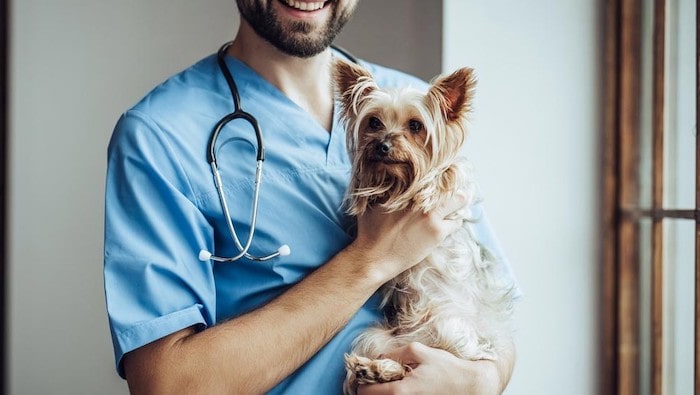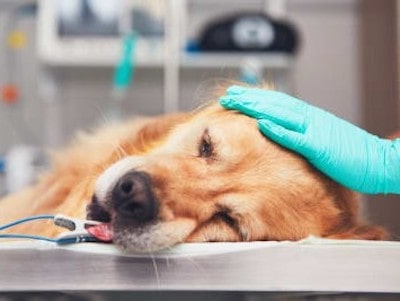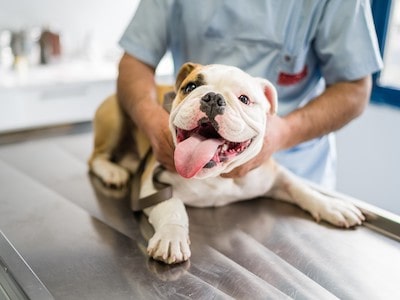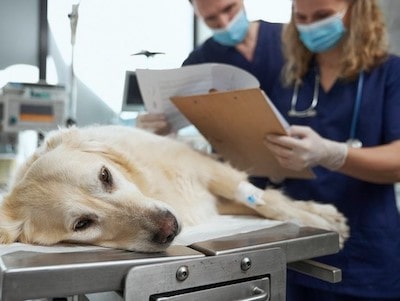In recent times, veterinarians have issued a warning that dog owners need to be on high alert due to a concerning rise in cases of deadly parvovirus. Parvovirus, commonly known as parvo, is a highly contagious and potentially fatal virus that affects dogs, particularly young or unvaccinated ones.
It attacks the dog’s gastrointestinal system, leading to severe symptoms such as loss of appetite, lethargy, diarrhea, vomiting, and dehydration. The increase in parvovirus cases has sparked alarm among veterinary professionals, urging dog owners to take immediate action to protect their beloved pets.
In this blog article, we will delve deeper into the rising threat of parvovirus, understand its risks, explore preventive measures, and highlight the importance of timely vaccination and veterinary care. By staying informed and proactive, we can collectively work towards safeguarding our furry companions from the dangers of this devastating virus.
What is Parvovirus and How Does It Affect Dogs?
Parvo is a highly contagious and potentially fatal virus that can infect any dog, but is particularly dangerous for young or unvaccinated dogs. The virus attacks a dog’s gastrointestinal system, causing symptoms such as diarrhea, vomiting, dehydration, lethargy, and loss of appetite.

The virus spreads through contact with contaminated feces or surfaces, as well as from dog to dog. The risk of parvo increases in spring and summer, when vulnerable puppies are born and spend more time outside. The pandemic has also contributed to a rise in parvo cases, as some pet owners may have missed vaccinations.
Recognize Parvo in Dogs
The signs of parvo infection may vary depending on the age, breed, and health status of the dog. However, some common signs include:
- Anorexia (loss of appetite)
- Lethargy (lack of energy)
- Vomiting
- Diarrhea (often bloody)
- Dehydration
- Fever
- Abdominal pain
- Depression
How Does Parvovirus Spread and Who Is at Risk?
Parvovirus spreads through contact with contaminated feces or surfaces. The virus can survive for months in the environment, and it can be carried by shoes, clothing, or other objects. It can also be transmitted from dog to dog through direct contact or shared bowls or toys.

Any dog can get parvovirus, but some factors increase the risk, such as:
- Age: Puppies under 6 months old are more susceptible to parvovirus, as their immune system is not fully developed.
- Vaccination status: Unvaccinated or incompletely vaccinated dogs are more likely to contract parvovirus, as they have no immunity against it.
- Breed: Some breeds, such as Rottweilers, Doberman Pinschers, Pit Bulls, and German Shepherds, may be more prone to parvovirus due to genetic factors.
- Stress: Stressful situations, such as moving, traveling, or boarding, can weaken a dog’s immune system and make them more vulnerable to parvovirus.
How Can You Prevent Parvovirus?
The best way to prevent parvovirus is to vaccinate your dog. Vaccines are available and recommended for puppies between 14 and 16 weeks old. The vaccine schedule may vary depending on your veterinarian’s advice, but usually involves a series of shots followed by booster shots every year or every three years.
Vaccination is not only beneficial for your dog’s health, but also for the health of other dogs in your community. By vaccinating your dog, you reduce the chances of spreading parvovirus to other dogs who may not be vaccinated or who may have weaker immune systems.

If you are looking for low-cost options for vaccination, you can check out some pet centers or nonprofit clinics that offer affordable or free services. You can also look for coupons or discounts online or in local newspapers.
In addition to vaccination, you can also prevent parvovirus by:
- Keeping your dog away from other dogs who may be sick or unvaccinated
- Cleaning and disinfecting any surfaces or objects that may have come in contact with infected feces
- Washing your hands and changing your clothes after handling an infected dog or visiting a place where parvovirus may be present
- Avoiding crowded or unsanitary places where parvovirus may be prevalent, such as parks, shelters, or pet stores
How to Treat Parvo in Dogs
There is no specific treatment for parvo infection. The main goal of treatment is to provide supportive care and prevent complications such as dehydration, electrolyte imbalance, sepsis (blood infection), or intestinal perforation.

Treatment may include:
- Fluid therapy: This involves giving fluids intravenously (through a vein) or subcutaneously (under the skin) to correct dehydration and electrolyte imbalance.
- Antiemetics: These are drugs that help reduce vomiting and nausea.
- Antibiotics: These are given to prevent or treat secondary bacterial infections that may occur due to the damage to the intestinal lining.
- Antiparasitics: These are given to eliminate any intestinal parasites that may worsen the condition.
- Painkillers: These are given to relieve abdominal pain and discomfort.
- Nutritional support: This may involve giving a bland diet or feeding tube to provide calories and nutrients.
Depending on the severity of the infection and the response to treatment, your dog may need to be hospitalized for several days or weeks until they recover. The prognosis for dogs with parvo depends on several factors such as age, breed, vaccination status, time of diagnosis, and quality of care. With proper treatment, however, 90% of dogs can recover.
Conclusion
Parvovirus is a serious disease that can affect any dog, but especially young or unvaccinated ones. It causes severe gastrointestinal symptoms that can be fatal if not treated promptly.
The best way to protect your dog from parvovirus is to vaccinate them regularly and keep them away from potential sources of infection.
If your dog shows any signs of parvovirus, seek veterinary attention immediately. With early diagnosis and supportive care, your dog can overcome this disease and live a happy and healthy life.

Ellis is a retired veterinary technician and full-time contributor at DogLovesBest. He likes writing about pet health care tips and reviews the products that are useful for fidos on a daily basis.
Ellis also guardians a Siberian husky, Nova, and a cat named Shilly. They all live happily with his wife Ammy, and both the dogs on a seaside apartment in Queens, NY.
